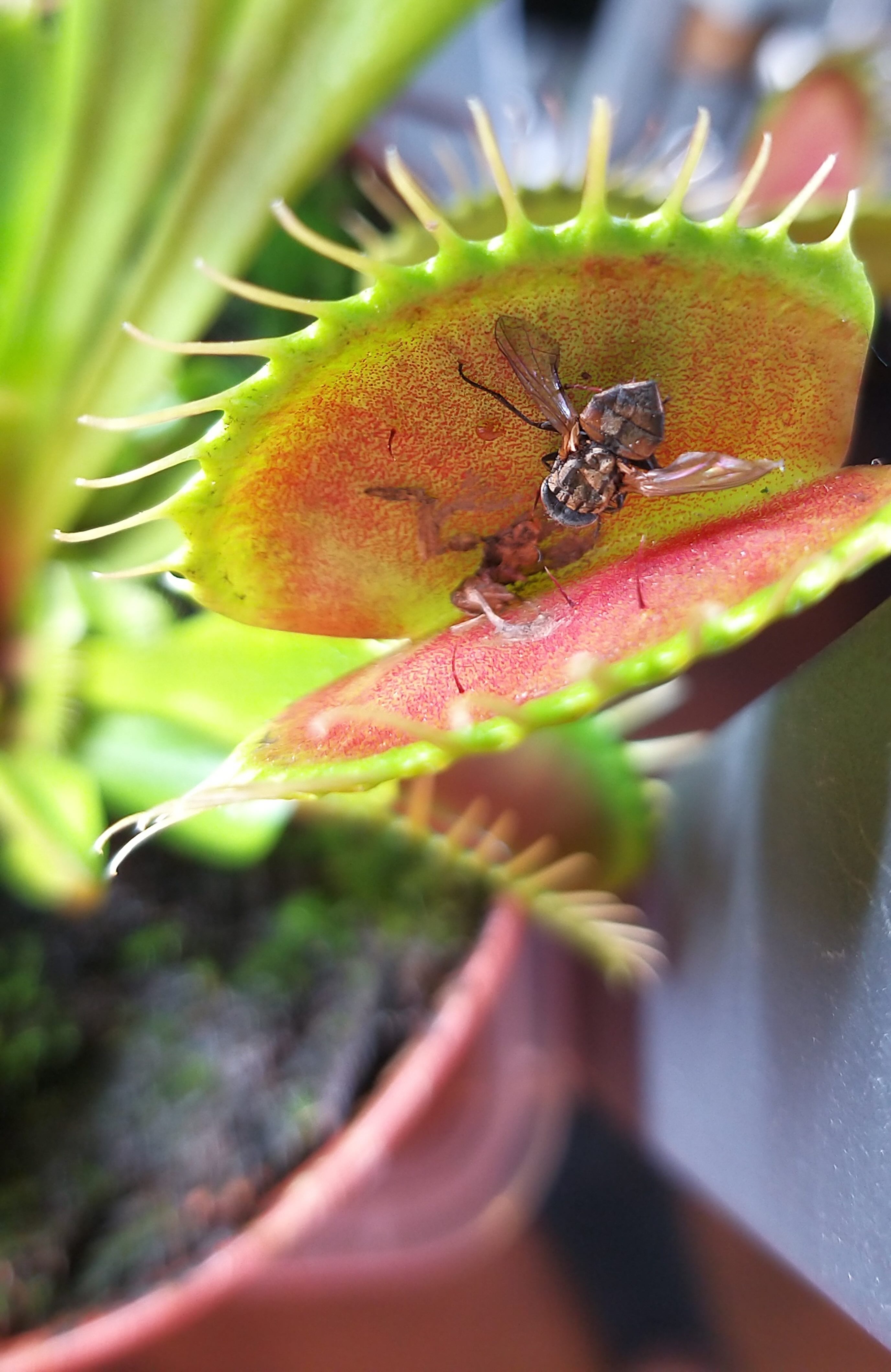Venus Fly Traps are fascinating carnivorous plants that are like something straight out of a sci-fi movie, but they’re very real and just as cool. Let's dive into the science behind their unique behavior and discover what makes these plants tick (or rather, snap!).


Meet the Venus Flytrap
First things first, let’s get acquainted with our star—Dionaea muscipula, more commonly known as the Venus flytrap. Native to the subtropical wetlands of the East Coast of the United States, very close to our stores here in Hampton Roads, these plants have evolved to thrive in nutrient-poor soil by catching and digesting insects.
How Do They Catch Their Prey?
The Venus flytrap has leaves that are modified into jaw-like traps. Each trap has two lobes with hair-like structures called trigger hairs. When an unsuspecting insect lands on the trap and touches these hairs, it sets off a chain reaction.
But here’s the twist—one touch isn’t enough to close the trap. The hairs must be touched twice within about 20 seconds to trigger the snap. This double-tap requirement helps the plant avoid wasting energy on non-prey items like raindrops or debris.
The Snap Mechanism
So, how does the trap close so fast? It all comes down to some nifty biology. The inside of the trap is lined with specialized cells that can change their shape rapidly. When the trigger hairs are stimulated, these cells release a surge of water, causing the lobes to flip from convex to concave in a fraction of a second. This action pulls the trap shut, much like how a snapped finger moves quickly and decisively.
Digesting the Prey
Once the trap is shut, the real work begins. The edges of the trap seal tightly, forming a kind of stomach. Glands on the inner surface of the trap secrete digestive enzymes, which break down the insect’s soft tissues. Over the next 5 to 12 days, the plant absorbs the nutrients from its prey. Once digestion is complete, the trap reopens, ready for its next meal, leaving behind the indigestible parts of the insect.
Why Do They Do It?
The primary reason Venus flytraps catch and digest insects is to supplement their diet. The boggy soils they typically grow in are low in essential nutrients, particularly nitrogen and phosphorus. By catching insects, they get a nutrient boost that helps them grow and reproduce more effectively.
Some more Flytrap Fun Facts:
- Each trap has a limited lifespan: After capturing and digesting about three to four insects, a trap will expire and a new one will grow in its place.
- Not just bugs: While insects are their main diet, Venus flytraps have been known to catch spiders and even small frogs!
- A clone army: Many Venus flytraps in cultivation are clones of each other, propagated through a process called vegetative propagation, ensuring that the desirable traits of one plant can be passed on to many others.
The Venus flytrap is a marvel of nature, combining rapid movement and carnivorous behavior in a way that’s both fascinating and functional. Next time you see one, you’ll know just what makes these plants such extraordinary hunters.
To stay inspired and grow with us, follow us on Facebook, Instagram, Pinterest, and TikTok to dig into the joys of gardening!
